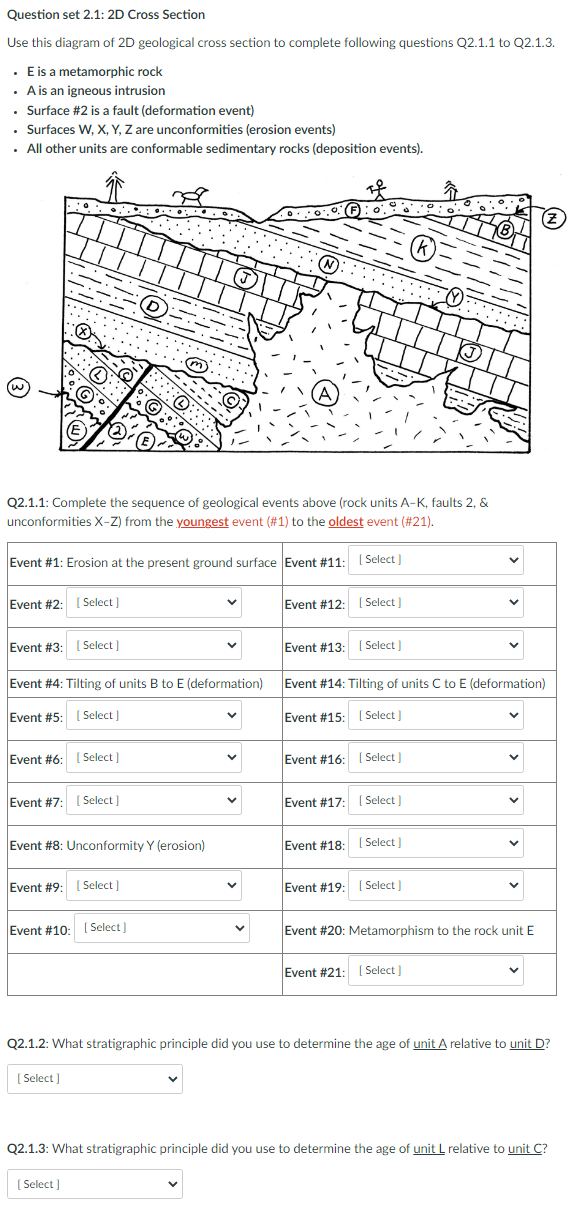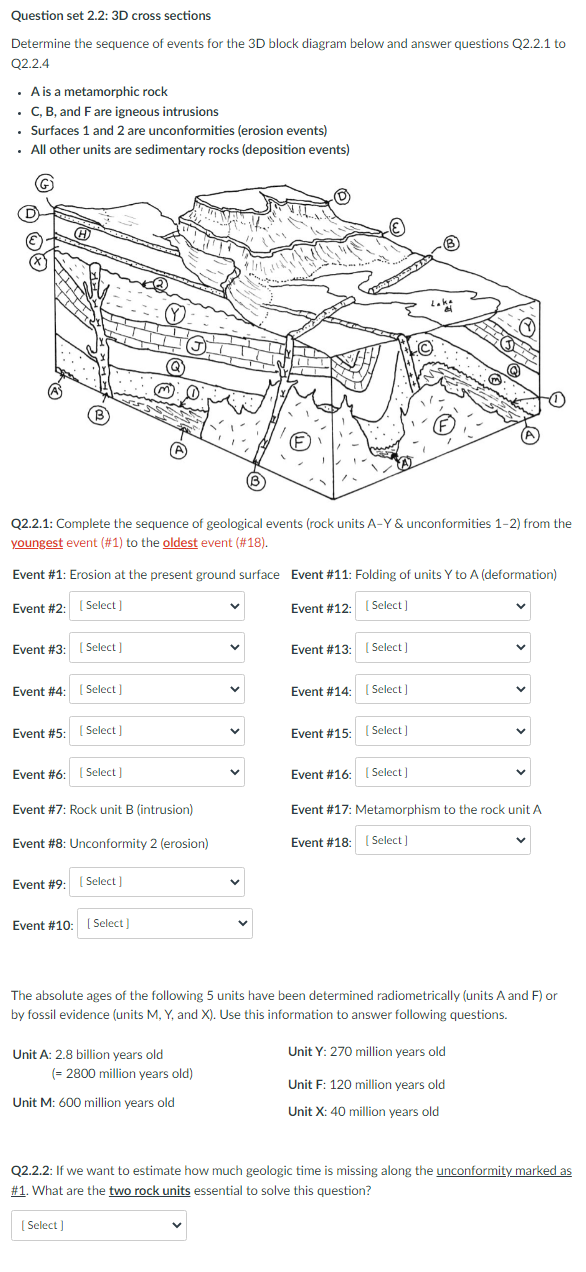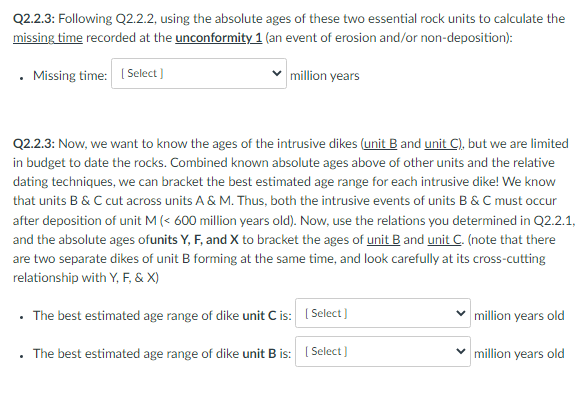Home /
Expert Answers /
Earth Sciences /
question-set-2-1-2d-cross-section-use-this-diagram-of-2-mathrm-d-geological-cross-section-pa177
(Solved): Question set 2.1: 2D Cross Section Use this diagram of \( 2 \mathrm{D} \) geological cross section ...
Question set 2.1: 2D Cross Section Use this diagram of \( 2 \mathrm{D} \) geological cross section to complete following questions \( \mathrm{Q} 2.1 .1 \) to \( \mathrm{Q} 2.1 .3 \). - \( E \) is a metamorphic rock - A is an igneous intrusion - Surface \#2 is a fault (deformation event) - Surfaces W, X, Y, Z are unconformities (erosion events) - All other units are conformable sedimentary rocks (deposition events). Q2.1.1: Complete the sequence of geological events above (rock units A-K, faults 2, \& unconformities \( X-Z \) ) from the youngest event (\#1) to the oldest event (\#21). Q2.1.2: What stratigraphic principle did you use to determine the age of unit A relative to unit \( \mathrm{D} \) ? Q2.1.3: What stratigraphic principle did you use to determine the age of \( \underline{u n i t} \mathrm{~L} \) relative to \( \underline{u n i t} \mathrm{C} \) ? Question set 2.2: 3D cross sections Determine the sequence of events for the 3D block diagram below and answer questions \( \mathrm{Q} 2.2 .1 \) to Q2.2.4 - A is a metamorphic rock - C, B, and \( \mathrm{F} \) are igneous intrusions - Surfaces 1 and 2 are unconformities (erosion events) - All other units are sedimentary rocks (deposition events) Q2.2.1: Complete the sequence of geological events (rock units A-Y \& unconformities 1-2) from the youngest event (\#1) to the oldest event (\#18). Event \#1: Erosion at the present ground surface Event \#11: Folding of units \( \mathrm{Y} \) to \( \mathrm{A} \) (deformation) Event \#2: Event \#12: Event \#3: Event \#13: Event \#4: Event \#14: Event \#5: Event \#15: Event \#6: Event \#16: Event \#7: Rock unit B (intrusion) Event \#17: Metamorphism to the rock unit A Event \#8: Unconformity 2 (erosion) Event \#18: Event \#9: Event \#10: The absolute ages of the following 5 units have been determined radiometrically (units \( A \) and \( F \) ) or by fossil evidence (units \( \mathrm{M}, \mathrm{Y} \), and \( \mathrm{X} \) ). Use this information to answer following questions. Unit A: \( 2.8 \) billion years old Unit Y: 270 million years old (= 2800 million years old) Unit F: 120 million years old Unit M: 600 million years old Unit X: 40 million years old Q2.2.2: If we want to estimate how much geologic time is missing along the unconformity marked as \#1. What are the two rock units essential to solve this question? Q2.2.3: Following Q2.2.2, using the absolute ages of these two essential rock units to calculate the missing time recorded at the unconformity 1 (an event of erosion and/or non-deposition): - Missing time: million years Q2.2.3: Now, we want to know the ages of the intrusive dikes (unit B and unit C), but we are limited in budget to date the rocks. Combined known absolute ages above of other units and the relative dating techniques, we can bracket the best estimated age range for each intrusive dike! We know that units \( B \& C \) cut across units \( A \& M \). Thus, both the intrusive events of units \( B \& C \) must occur after deposition of unit \( M(<600 \) million years old). Now, use the relations you determined in \( \mathrm{Q} 2.2 .1 \), and the absolute ages ofunits \( \mathrm{Y}, \mathrm{F} \), and \( \mathrm{X} \) to bracket the ages of \( \underline{\text { unit } \mathrm{B}} \) and \( \underline{u} \) nit \( \mathrm{C} \). (note that there are two separate dikes of unit B forming at the same time, and look carefully at its cross-cutting relationship with \( Y, F, \& X) \) - The best estimated age range of dike unit \( \mathrm{C} \) is: million years old - The best estimated age range of dike unit \( \mathbf{B} \) is: million years old
Expert Answer
Question 2.1.1 1 - Erosion at present ground surface - youngest 2 - F 3 - Z 4 - Tilting event of B to E ( deformation) 5 - B 6 - K 7 - N 8 - unconform


